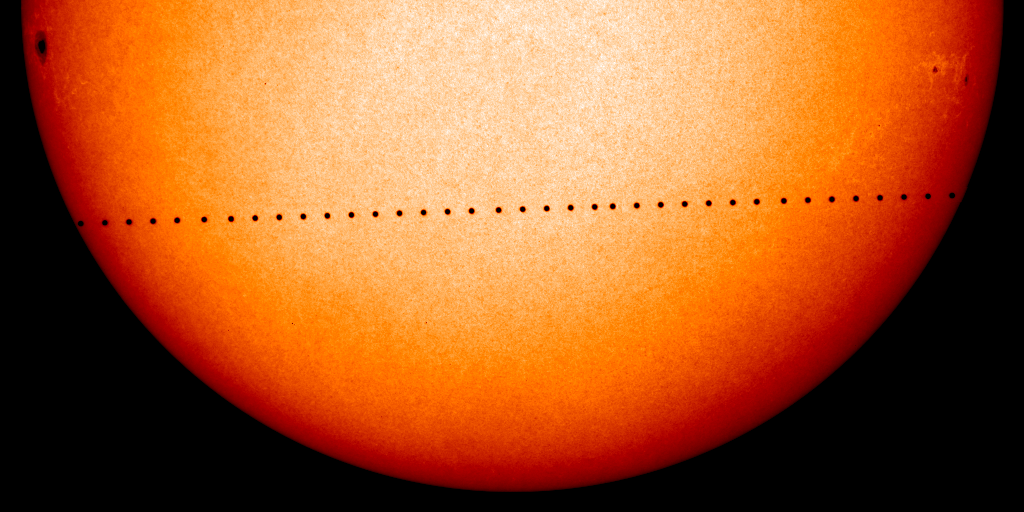Mercury Transit 08 November 2006
|
Mercury's path across the solar disk as seen from SOHO 
Click on the image for a larger version |
|
A transit of Mercury is a very small solar eclipse. Its appearance is very different from a total eclipse, though, because the disk of Mercury is about 200 times smaller than the diameter of the sun as seen from the earth. Instead, one could see a small black disk cross the face of the sun during a five-hour journey. A transit occurs whenever a planet moves between the the earth and the sun. At that time we see a small black disk crawl across the face of our star. Obviously, only the planets Mercury and Venus can do this because those are the only planets with orbits smaller than the earth's, and hence the only planets that can get between us and the sun.
Depending on where you reside on our home planet, you may or may not have been able to see the Mercury transit. SOHO, in any case, has been able to observe the transit in its entirety since it is conveniently orbiting the Lagrangian point L1 between sun and earth.
Note that you need to rotate SOHO images by approx. 23 degrees (the so-called "P angle") counter-clockwise before superposing them with images of the Mercury transit taken from earth. This plot shows Mercury's path as seen from SOHO.
Related Links
SOHO Links
|
Miscellaneous Links
|







